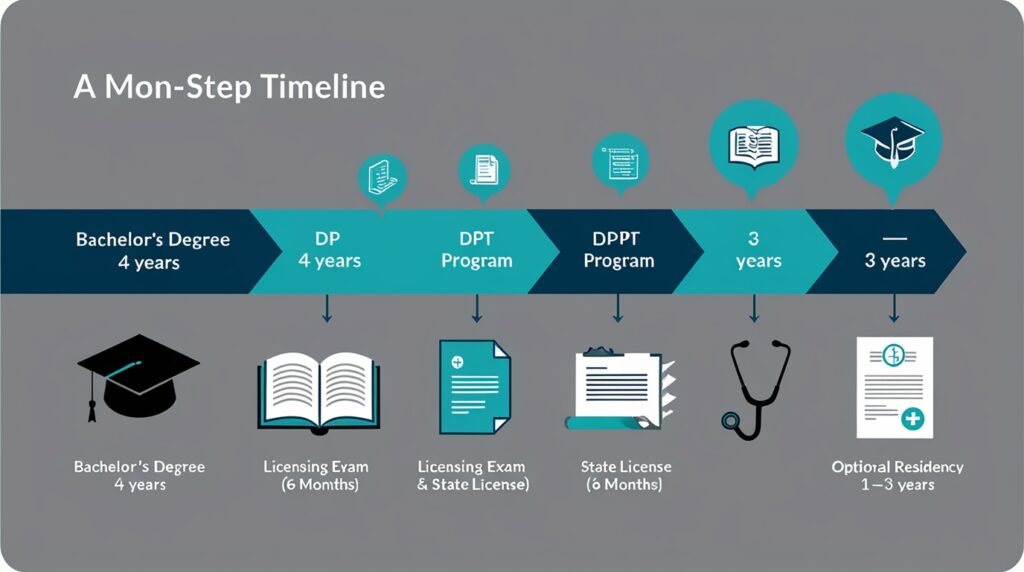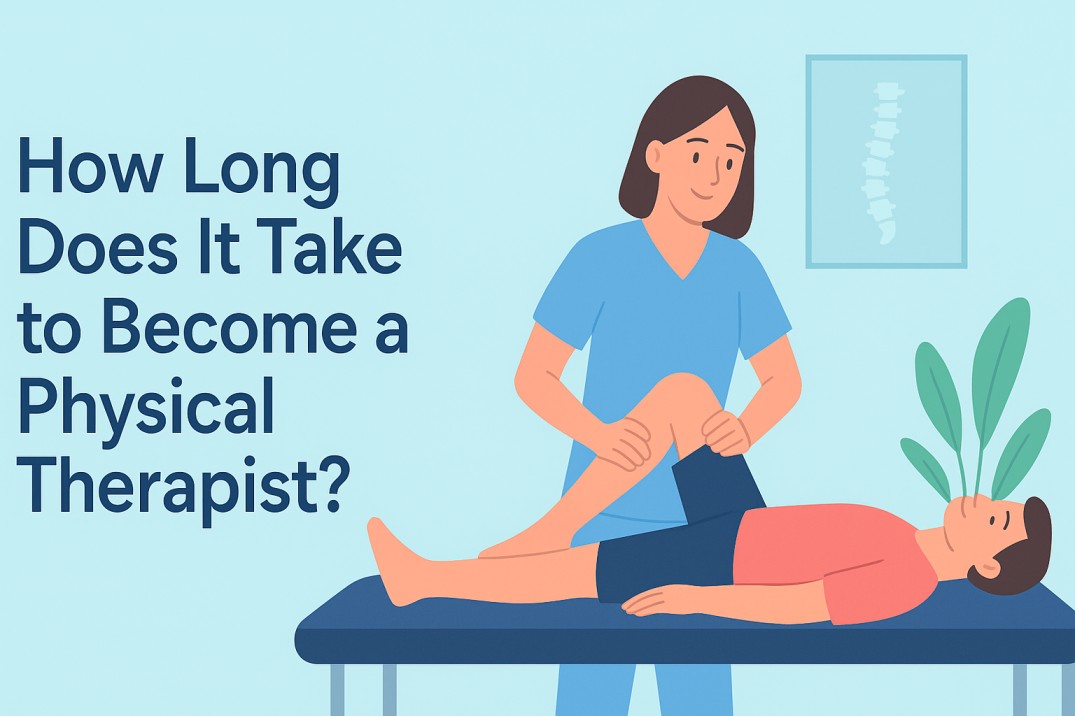Ask ten different students why they chose physical therapy, and you’ll probably get ten different answers. Some were athletes who got injured in high school and spent weeks in rehab. Others were drawn to healthcare but didn’t want to become doctors or nurses. A few just love anatomy and movement.
But no matter how you arrive at the decision, one question always comes up:
How long does it take to become a physical therapist?
The short answer is: around 7 to 8 years of college and training before you can practice. The long answer is a little more complicated—because the journey looks different depending on the path you take. Let’s break it down step by step, with a little honesty about what it really feels like along the way.
Step 1: The Bachelor’s Degree (About 4 Years)
Everything starts with an undergraduate degree. You can technically major in anything, but most students stick to something health-related—kinesiology, biology, exercise science, or psychology.
Why? Because graduate schools (the DPT programs) have a long list of prerequisites. Think anatomy, physiology, chemistry, physics, statistics, and psychology. If you pick a random major, you’ll likely need to circle back and fill in those classes later. That can add time, money, and stress.
Most students finish undergrad in four years. Some push through in three if they’re laser-focused, and others take five because they switch majors or double major. That’s real life.
???? Bottom line: Expect about 4 years.

Step 2: Doctor of Physical Therapy (DPT) Program (3 Years)
Once you’ve got the bachelor’s degree, the next step is a DPT program. This is the part people usually underestimate. Getting accepted is competitive. Schools look for GPAs, recommendation letters, and volunteer hours.
If you get in, buckle up. A DPT program is three years of full-time study. It’s not just lectures—you’ll split your time between classrooms, labs, and clinical rotations.
- In class, you’ll learn biomechanics, neurology, pathology, and treatment methods.
- In labs, you’ll practice techniques on classmates before ever touching a patient.
- On clinical rotations, you’ll finally step into real hospitals or rehab clinics.
By the time you graduate, you’ll have hundreds of hours of hands-on experience. Many students say this is when it finally “clicks”—when theory turns into practice.
???? Time here: 3 years.
Step 3: The Licensing Exam
Graduation doesn’t mean you’re done. Before you can legally call yourself a physical therapist, you have to pass the NPTE (National Physical Therapy Examination).
It’s a long, tough exam, and most students spend two or three months studying for it. Some pass on the first try. Others need a retake. It’s stressful, but it’s part of the process.
Step 4: State Licensure
After passing the NPTE, you still need a state license. Each state has its own requirements—some ask for extra law exams, some require background checks. Usually this only takes a few weeks, but it’s another hoop to jump through.
Step 5: Optional Specialization (1–3 Extra Years)
Here’s where your path can stretch even longer. Some physical therapists are happy with general practice, but others want to specialize.
You might do a residency in sports rehab or pediatrics, which takes about a year. Or you might go for a fellowship, which can add another year or two. None of this is required, but it can boost your career options and salary.
So, What’s the Total Time?
If you do the math:
- Bachelor’s degree: ~4 years
- DPT program: 3 years
- Licensing & state approval: a few months
- Optional residency/fellowship: +1–3 years
???? Total: About 7 to 8 years on the standard path, or up to a decade if you specialize.

Can You Do It Faster?
A little, yes. Some universities offer 3+3 programs, which combine undergrad and DPT into six years instead of seven. That shaves off a year, but it’s still a long road. There’s no real shortcut around the doctorate.
Is It Worth the Time?
That depends on what you’re looking for in a career.
- Job outlook: Excellent. The field is expected to grow much faster than average over the next decade.
- Salary: Around \$97,000 per year in the U.S., sometimes more with experience.
- Fulfillment: This is the real kicker. Physical therapists often say the best part of the job isn’t the paycheck—it’s watching someone walk again after surgery or seeing an athlete get back to their sport.
FAQs
1. How long does it really take?
Most students spend about 7–8 years after high school.
2. Do I need a doctorate?
Yes. Since 2016, the entry-level requirement in the U.S. is a Doctor of Physical Therapy.
3. Is the NPTE exam hard?
Yes, but most students pass with proper preparation.
4. Do I need to specialize?
Not at all—it’s optional, though it can be rewarding.
5. Can I study faster?
Accelerated 3+3 programs exist, but they’re intense and only save a year.
Final Thoughts
So, how long does it take to become a physical therapist? The honest answer: at least seven years, often eight, and sometimes more if you choose to specialize.
It’s not the fastest path, but the payoff is a stable career, a good salary, and the chance to make a real impact on people’s lives every single day.
If you’re passionate about healthcare and patient care, the years won’t feel wasted—they’ll feel like an investment in a career you’ll love.









